Gericault, Portraits of the Insane
At the end of 1821 the leading Romantic painter in France, Théodore Géricault, returned from a year-long stay in England.
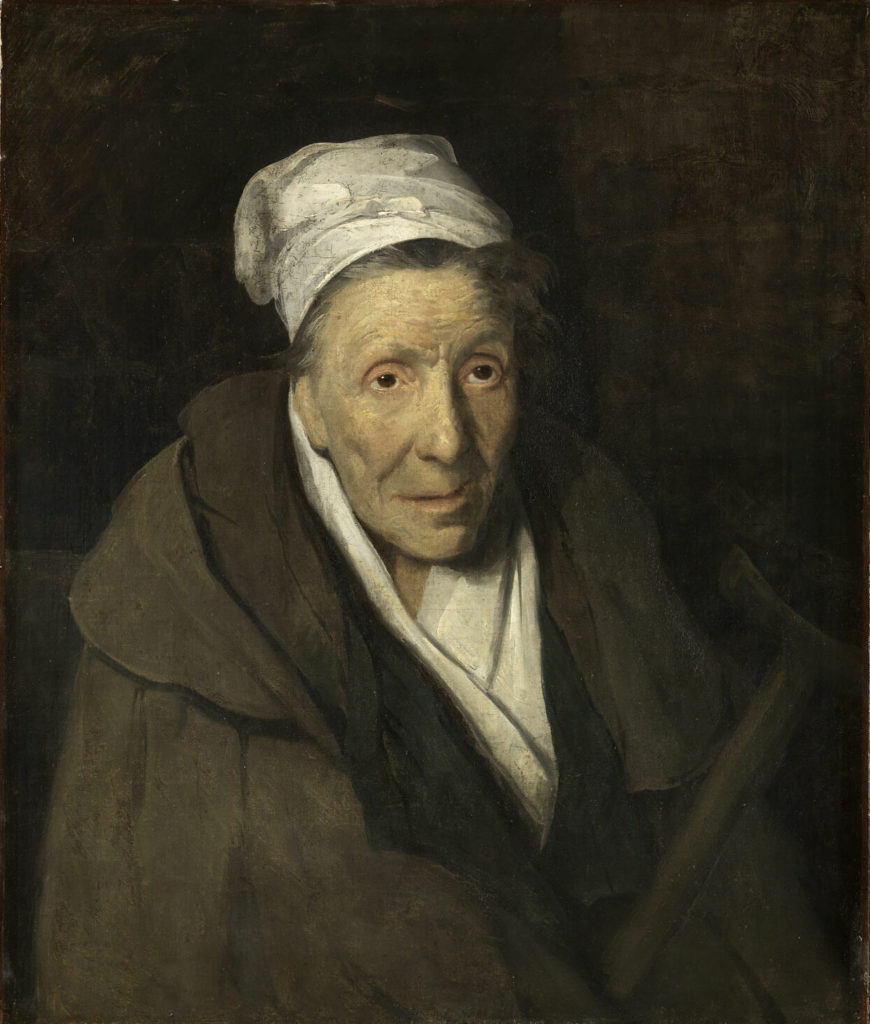
Perhaps the greatest achievement of his last years were his portraits of the insane. There were ten of them originally. Only five have survived: A Woman Addicted to Gambling, A Child Snatcher, A Woman Suffering from Obsessive Envy, A Kleptomaniac; and A Man Suffering from Delusions of Military Command.
No information is available for those that have been lost. According to the artist’s first biographer, Charles Clément, Géricault painted them for Étienne-Jean Georget (1795–1828), the chief physician of the Salpêtrière, the women’s asylum in Paris. The paintings were certainly in Georget’s possession when he died.
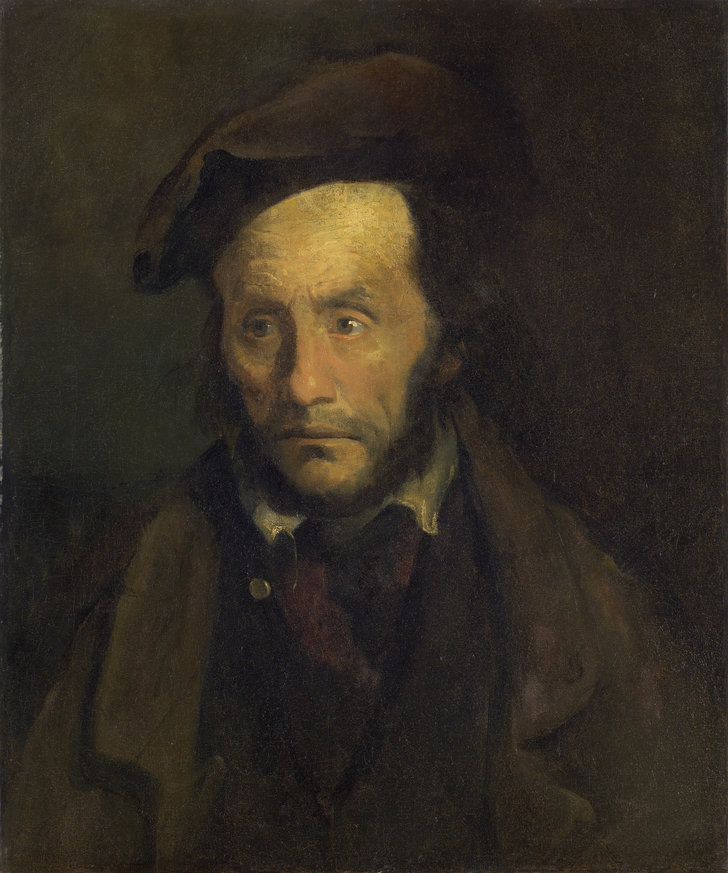
A key figure in early modern psychiatry in France was Jean-Etienne-Dominique Esquirol (1772–1840), whose main area of interest was “monomania,” a term no longer in clinical use, which described a particular fixation leading sufferers to exhibit delusional behavior, imagining themselves to be a king, for example. Esquirol, who shared a house with his friend and protégé Georget, was a great believer in the now largely discredited science of physiognomy, holding that physical appearances could be used to diagnose mental disorders. With this in mind, he had over 200 drawings made of his patients, a group of which, executed by Georges-Francoise Gabriel, were exhibited at the Salon of 1814. As an exhibitor himself that year, it seems highly likely that Géricault would have seen them there.
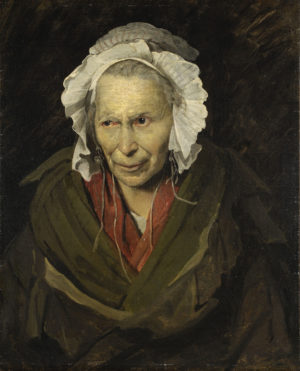
The portraits
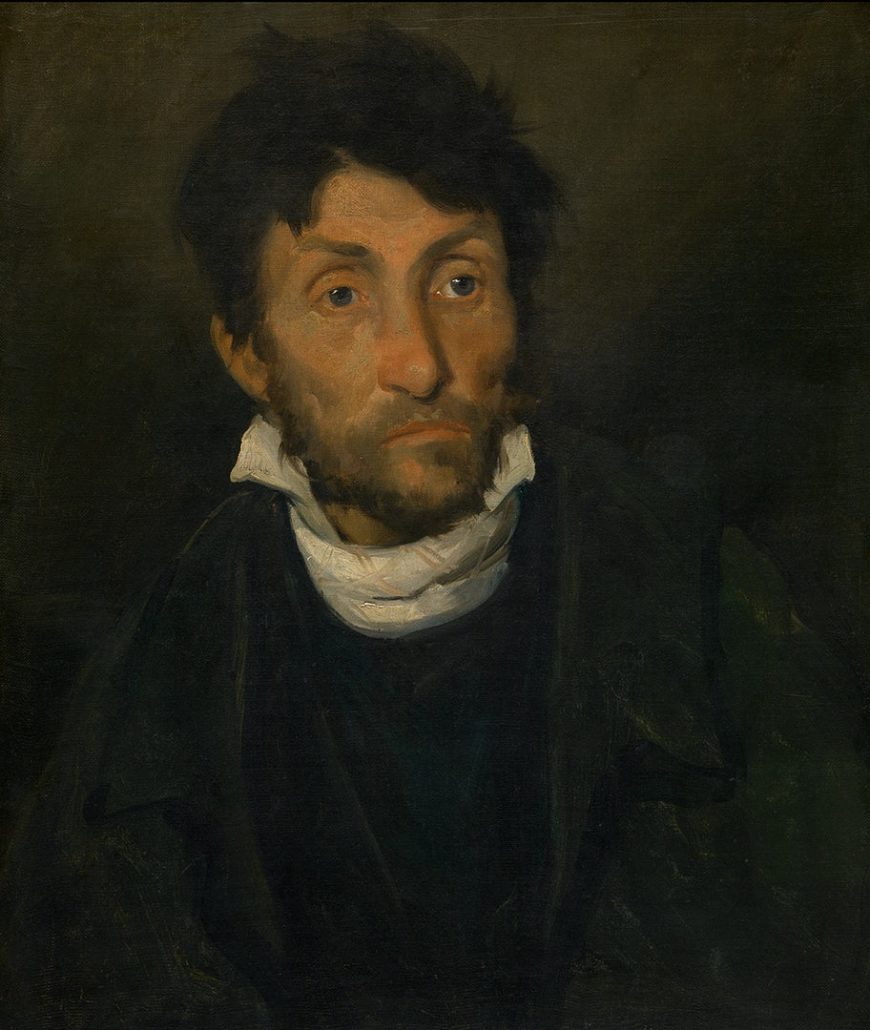
The five surviving portraits are bust length and in front view, without hands. The canvases vary in dimensions but the heads are all close to life-size. The viewpoint is at eye level for the three men but from above for the women, indicating that the paintings were executed in different places. It seems likely that the women were painted in the women’s hospital Salpêtrière, while the men were selected from among the inmates of Charenton and Bicȇtre. None of the sitters is named; they are identified by their malady. None look directly at the viewer, contributing to an uneasy sense of distractedness in their gazes that can be read as stillness, as though they are lost in their own thoughts, or as disconnectedness from the process in which they are involved. These are not patrons and have had no say in how they are depicted.
Each is shown in three-quarter profile, some to the left, some to the right. The pose is typical of formal, honorific portraits, effecting a restrained composition that does not make it apparent that they are confined in asylums. There is no evidence of the setting in the backgrounds either, which are cast in shadow, as are most of their bodies, drawing the focus largely on their faces.
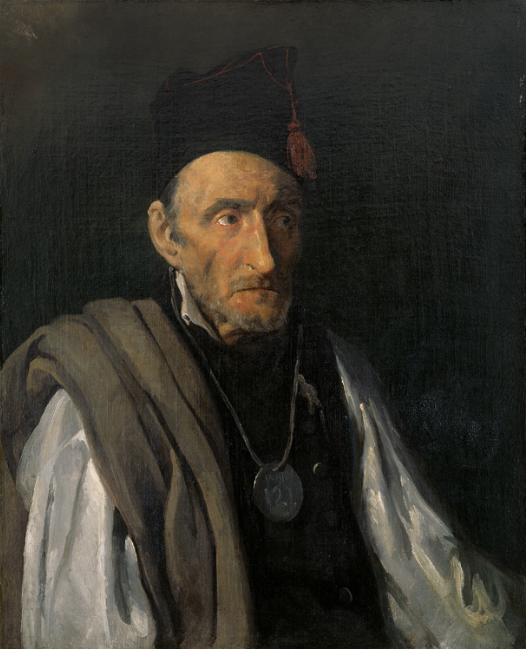
The dark coloring creates a sombre atmosphere, evocative of brooding introspection. Their clothing lends them a degree of personal dignity, giving no indication as to the nature of their conditions, the one exception being the man suffering from delusions of military grandeur who wears a medallion on his chest, a tasseled hat and a cloak over one shoulder, which point to his delusions. The medallion has no shine to it and the string that it hangs from looks makeshift and worn.
The paintings were executed with great speed, entirely from life and probably in one sitting. Critics often remark on the painterly quality of the work, the extraordinary fluency of brushwork, in contrast with Géricault’s early more sculptural style, suggesting that the erratic brushwork is used to mirror the disordered thoughts of the patients. In places it is applied in almost translucent layers, while in others it is thicker creating highly expressive contrasts in textures.[1]
- Ben Pollitt, "Théodore Géricault, Portraits of the Insane," in Smarthistory, August 9, 2015, accessed March 22, 2023, https://smarthistory.org/gericault-portraits-of-the-insane ↵

